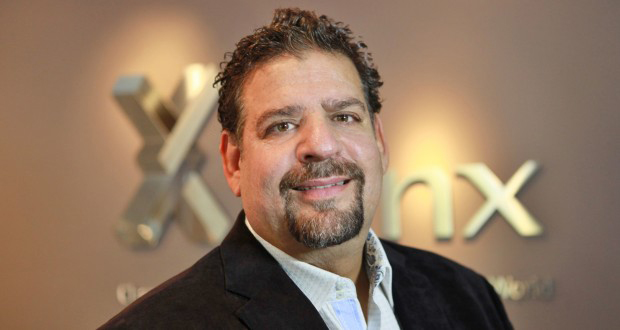The Question of “What Comes First” has Forever Been Answered!
People Vote (and Buy) on Pain, not Promise
“As much as I knew that it was a possibility, the stark fact that a majority of Americans wanted radical, disruptive change so badly and simply did not care who the change agent was, what sort of role model he could be for our children, whether he really had any ability to execute on his plan — or even really had a plan to execute on — is profoundly disturbing… And for the first time, I feel homeless in America.”
– Tom Friedman, NY Times Columnist & Author
Imagine all the mistakes made by the Trump campaign not costing him the election. It is no longer unimaginable! Most pundits are flabbergasted over the results of this year’s presidential election. They simply failed to see the emotional connection between voters and an unconventional, perhaps faulty candidate. A connection built on perceived leadership and strength with voters who are simply fed up with the status quo of political leaders who have failed to meet their needs… for decades.
A buyer’s propensity for risk aversion in buying decisions is one of the most researched subjects in marketing, which was clearly proven in this election cycle. A vote for change was simply more important than a perfect candidate, or even a good highly qualified candidate. This was especially true for any candidates, policies or ideas that represent the past. For this election, those who voted (especially in the heartland of America) saw another typical politician as a greater risk to their lives, than the risk of electing a reality TV personality, business leader and what some call a megalomaniac.
As a side note, I bring up one important factor here – That voting is very personal and while many are able to vote for the greater good of America, when your life is not on track, getting it back on track is all that matters. This is why people buy for selfish reason. And why good marketers work tirelessly to look beyond a buyers desires and focus on what is lacking in a buyers life and needs to be fulfilled on an emotional level.
Big Data Can Drive the “Right” or “Wrong” Strategy
We all know that presidential campaigns are some of the most extreme marketing programs developed. With hundreds of millions of dollars being spent over short periods of time, each campaign of the 2016 presidential elections looked at billions of data points to predict where to focus, geographically, and what message to emphasize in each target market.
Whether telemarketing, events, direct marketing, social media, digital advertising or broadcast, this year’s political messaging was all based upon the unique attributes of each distinctive town, city or state.
What has become clear to us all after the election is that the Trump team saw the data differently and was able to garner knowledge that simply was not apparent to the Clinton team, pollsters and media.
What has become clear to us all after the election is that the Trump team saw the data differently and was able to garner knowledge that simply was not apparent to the Clinton team, pollsters and media.
What the experts missed was the silent vote refusing to participate in the polling as a way to express their disenfranchisement with “The System”. The pollsters focused on the larger cities where it is easier to poll, instead of the rural markets where Trump received 2/3rd of the vote. That is what created unintended bias in the datasets and analysis. Then the media simply pushed the incorrect assumption of the bad data/analysis out to the public. So we all were building a greater bias, together. This phenomenon of bias is not new, but there are now some new technologies, especially for marketers, that are helping to eliminate unintended bias.
How AI Will Change Marketing & Politics Forever
A week before the election I returned from IBM’s World of Watson conference in Las Vegas. This issue of bias is actually one of the core communication points of their AI solution – Watson.
“Watson straddles cognitive computing and programmable computing, harnessing and processing the more than 2.5 billion gigabytes of data generated each day. Its machine-learning capabilities simulate the human thought process, but is built to eliminate the biases and error out of decision-making.”
With the ability to ingest terabytes of (Big) data in minutes and synthesize it in just seconds, connecting private, public and real-time data sources, is the future of all marketing. Today, most marketing decisions are made based on in-house customer data combined with some third party sources. At times it is difficult to correlate the data and especially difficult to bring the data down to the individual customer level. NOT ANY MORE!
Solutions like “IBM Watson Marketing” make connecting the data and building unbiased predictive models relatively simple as a new SaaS Solution! Imagine a system able to connect your customer data with all public record data, academic data, news and social feeds, licensed industry data sets, and longitudinal data. And then, teaching and training the system with AI decision assisted support that integrates a diverse set of outcomes to help eliminate the bias inherent in every man-made decision.
For political campaigns, just like all business, the use of AI is just beginning. Trump got lucky in reading the data right, but in the future AI models will help all sides get to the right answers and help develop a better strategy… a winning strategy.
Today, this new model of marketing is only ready for big time players, but shortly it will be available to the SMB market place, leveling the playing field. These systems require less data scientists and more strategists who can tie together the new knowledge in unique ways. Is your organization ready to leverage the new technologies?
Brand Trumps All
What is the great lesson for marketers here? Brand is king, even for candidates. And brand is the emotional connection to the customer that can be made stronger by better data and insights. But the challenge remains that once your team gets the data, they still need to interpret the full context of the combined data sets and create a strategy that speaks to the heart as much as the mind.
This election people voted based on fear, after all if you fear losing your livelihood nothing else matters. In marketing, Maslow’s hierarchy of needs apply. So make sure your customers are getting their basic needs met, before you begin promising any aspirational and non-essential attributes that are meaningless, unless your customers have their basic needs covered.
So as you and your team position your brand, remember it is better to get customers to buy with their hearts (emotions), than their wallets. Cause they will always find a way to support you if they connect with your brand in a meaningful way in their life.
On a personal note, we are all hoping for a successful presidency for Donald Trump. Let’s hope there is no buyer’s remorse when we look back a year from now.


 As a marketing entrepreneur Michael Smith builds brands and creates strategic solutions for B2B, B2C and Non-Profit organization, where he operates under a philosophy of being both strategically creative and creatively strategic. He is currently CEO of
As a marketing entrepreneur Michael Smith builds brands and creates strategic solutions for B2B, B2C and Non-Profit organization, where he operates under a philosophy of being both strategically creative and creatively strategic. He is currently CEO of